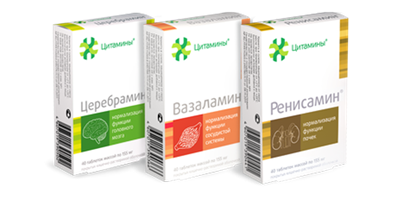Memory Models in Cognitive Psychology
06 Nov 2016
Psychologist Dr. Doping talks about memory systems, information storage principles and the causes of forgetting.
Memory Research in cognitive psychology starting in the context of the knowledge of the computer metaphor, that is, compare it with the work of computer architecture that has the input-output system, CPU and two memories - operative and constant.
Similarly, psychologists have begun to distinguish between two subsystems in the system memory: the memory of short- and long-term memory. The first such two-component model of memory was proposed by Donald Norman and Nancy in 1965. They suggested that short-term memory, having a very small amount of storage and time required to maintain the information in it constant repetition of this information. And the repetition process ensures permanent preservation of its long-term memory in the system, from which the information is already hypothetically never disappears.
But in fact, in favor of a two-component model of memory showed the experimental data and clinical. With regard to the experimental data, if you read a man long list of words, units 30, and ask for a free order to recall all that he could, the man best reproduces the first words of the series, apparently, because the time to repeat them as the presentation and the last words of the series because, as suggested by psychologists, remove them directly from the short-term memory, is not moving in the long term.
Cleavage of these two systems is observed in the so-called syndrome Milner. Brenda Milner described clinical patient case in which, after an unsuccessful operation on the brain survived, on the one hand, the whole of his past experience until brain damage on the other - the ability to solve the current problems involved in the conversation and so on, but after 5 minutes, this people do not remember what happened to him before. Thus, the transfer of information from short-term memory to long-term did not occur.
Three years later, in 1968, Richard Atkinson and Richard Schiffrin complemented this model is still one unit - the so-called ultra-short-time memory, or sensory registers, where information is held within a very short time to maintain the continuity of the process of perception. Each modality sensory register your. For example, vision is iconic memory in hearing - echonic. And further studies of memory in cognitive psychology, with a few exceptions, developed in line with this ternary logic. We studied three separate memory subsystem, three boxes in which the information is stored for a certain time. Psychologists asked basic questions about how information gets there, in what form, in what way is encoded as it is stored there, how long and to what extent, how is retrieved and forgotten for some reasons. Furthermore, their naturally interested processes arising within each of the systems, and at the transition from one system to another.
To improve cognitive enhancement you can with the help of Cogitum, Cortexin, Vitamin B12 (Cyanocobalamin) injection.
For example, Atkinson and Schiffrin, in its three-component model to process repeating as the information transfer from the short term memory to long-term added emphasis process for the transfer of information from the touch sensitive to short term memory, for further processing, and possibly storing, and structuring process enlargement units process managed code - memory with a variety of mnemonic techniques, search and retrieval processes, allowing to pull the information from the non-volatile memory back to the short-term, so that it could be used to address the current challenges.
If we try to characterize these three system memory, something about the sensory registers, we can say that there is information retained in full in the modal-specific form, but not more than half a second in vision, no more than 2-4 seconds at the hearing. It is easy to prove after George Sperling, presenting a person, for example, the character of the matrix in an amount sufficient to allow the visual system, for example, 16 pieces, and asking him to reproduce is not all that he saw (then he would call 4-5 characters), and then what we get his attention, such as a beep or underlined. Then we will see that people will be able to recall any character, which means that in the sensory register kept all. But if we defer this signal, we can see that can be stored is very long, and very quickly fades. This is the main reason for the forgetting of a touch-sensitive. Although we may delete the information there is, for example, by masking, showing a plate after a bright flash.
The information stored longer term memory - as experiments show, to thirty seconds. It is also easy to measure, giving the man a simple memory task such as Peterson's wife, three letters, but forcing him to do something that would distract him from repeating these letters. For example, lead the countdown triples from any type of 271. And we see that in 18 seconds only 20% of people can recall the three letters. Therefore, they should be there collapses.
But the main reason for the forgetting of information from short-term memory - it is a small amount. It was once thought it was 7 ± 2 magic number George Miller. Now it is adjusted to 5 elements. Limited space, therefore some elements are replacing another, but what stands out from the system memory, forgotten and can not be played from there.
In what form the information is stored there? First, psychologists believed that in the form of acoustic articulation, because, in order to keep something in the short-term memory, we have to repeat it to yourself, pronounce. But soon it was proved that it is possible to at least the visual coding, and other possible forms of coding. For example, psychologist Alan Baddeley, in principle, believes that short-term memory (or working, as he calls it) is not uniform: it has the phonological loop, where we repeat the information in it is visual-spatial sketch pad, or a matrix in which we can retain visual information. In principle, we are able to retain and image, and by repeating the information, they will not interfere with each other. Hence, at least there are two subsystems.
Now Baddeley allocates another subsystem for short-term storage, so-called episodic buffer in which we hold all the information about a particular event, an event with us, for further transfer to our autobiographical memory. And all of this, among other things, controls the so-called central executive, the central processing unit capable of holding the information, use the information and pass it on, in long-term memory, where we can it translate either by repetition or by structuring the formation, separation of semantic pieces.
For example, remembering a phone number, we can see where someone's date of birth, or the number of apartments, or anything else. This will help us to remember this information.
Long-term memory itself is not homogeneous. It differs for at least the procedural memory system that stores our skills that we can not say anything, as a rule, but it can be used effectively, and declarative memory where facts are stored.
To improve memory – buy and take Phenotropil, Semax and Meldonium.
In turn, in the declarative memory subsystem is distinguished semantic memory, which stores our knowledge of the world. Presumably they are stored in the form of semantic and hierarchical networks connected to each other and categories of objects. Perhaps in the nodes of these networks are the so-called circuit, which stores the generalized descriptions of objects or situations, such as circuit-prototypes corresponding typical members of certain categories, or schema scripts representing a typical sequence of events in a given situation.
An episodic memory, which also refers to the subsystem declarative memory, arranged in a fundamentally different way: it contains the events of our lives, our past experience is always individual and organized along the time axis. And if from semantic memory we extract information by searching the network, and we assume that when we need to extract any special knowledge, a low-level objects inherit the properties of a high-level. For example, if we ask whether the duck eyes, we do not need to store connection duck and eye as a single ligament in the memory system. Duck is a Bird. The bird has eyes. Therefore, they, too, have duck. Similarly, we come to the fact that it has a spine, as refers to vertebrates.
And the events of episodic memory we extract, referring to some point in our lives. That is, they are arranged along the time axis. When we need to remember we somehow relate to our past experience.
As the researcher Endel Tulving episodic memory, these subsystems - semantic, episodic - presumably even different brain substrate. If you ask people in a functional magnetic resonance imaging or positron emission tomography as Tulving done, extract the facts from his own memory and the facts, for example, the history of astronomy, we will see that these two tasks activate different parts of the brain.
Because of what the lost information from the long-term memory? Psychologists are still studying it. Presumably it is not lost at all - lost access to it. This is especially true of the semantic memory. And it illustrates the phenomenon of spinning on the tip of the tongue, when we can not remember a word that we know for sure, and we can help, for example, a sound clue.
The episodic memory is one of the main causes of forgetting - it is interference or confusion between repeating events. We had breakfast every day, walk, go to work, sit in the subway, and as it was in a particular day, if not coincided with something of public interest or significant for us, and we can not remember.
But in procedural memory traces, apparently extinct, if the skill is not being used, such as the skill of playing a musical instrument, but in any case recovered after some time more efficiently than during the initial memorization. However, apart from this component model, in cognitive psychology, there are essentially an alternative model in which the memory is not considered as a set of boxes, as well as a function of the depth of information processing. Such a theory was offered in the 1970s, Fergus Craik and Robert Lockhart. And they showed that the deeper, than in more aspects, we are processing the information, the better we would like to remind her later, even if the problem is not worth remembering.
For example, if we need to understand the written word in lowercase or uppercase letters, we later remember it a lot worse than if we need to understand whether it is synonymous with another word or does it characterize us.
This theory at the time received quite a lot of popularity and is now co-exist with the traditional block, box approach, though experimental studies carried out in the context of more than just the study of memory subsystems, instead of the memory as a function of the depth of information processing.

 Cart
Cart





